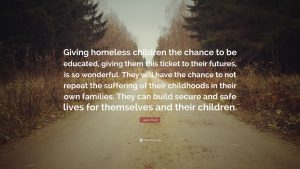North Kossuth Community School
Homeless Program
(North Union Middle School & North Union Elementary Swea City)

HOMELESS EDUCATION SUPPORT AND SERVICES
Children experiencing homelessness need a stable, supportive environment. Schools offer consistent educational experiences, teachers, and friends during this transitional time. Maintaining these school ties supports academic achievement, physical health, emotional resiliency, and learning of vital skills to escape poverty.
EDUCATION FOR HOMELESS
Who is homeless?
Iowa Administrative Code – IAC [281] Ch. 33
- A homeless child or youth ages 3-21;
- A child who lacks a fixed, regular and adequate nighttime residence and includes the following:
- A child who is sharing the housing of others (includes doubled-up families) due to loss of housing, economic hardship, or a similar reason; is living in a motel, hotel or camping grounds due to the lack of alternative accommodations, is living in an emergency or transitional shelter; is abandoned at a hospital.
- A child who has a primary nighttime residence that is a public or private place not designed for or ordinarily used as a regular sleeping accommodation for human beings.
- A child who is living in a car, park, abandoned building, substandard housing, bus or train station, or similar setting; or
- A migratory child/youth who qualifies as homeless because of the living circumstances described above.
- Includes youth who have run away or youth being forced to leave home.
Local Homeless Liaison: Every Iowa public school district is required to have a liaison for homeless students. The contacts for the North Kossuth Community School District are
|
Anita Helmich |
Julie Runksmeier |
Either can be reached at 515.272.4361
(McKinney-Vento Homeless Assistance Act of 2001- Title X, Part C of the No Child Left Behind Act – Sec. 725)
HOMELESS FAQs
HOMELESS EDUCATION SUPPORT AND SERVICES
Who is homeless?
(McKinney-Vento Homeless Assistance Act)
The term “homeless children and youth”—
- means individuals who lack a fixed, regular, and adequate nighttime residence…; and
- includes —
- children and youths who are sharing the housing of other persons due to loss of housing, economic hardship, or similar reason; are living in motels, hotels, trailer parks, or camping grounds due to the lack of alternative accommodations; are living in emergency or transitional shelters; are abandoned in hospitals;
- children and youths who have a primary nighttime residence that is a public or private place not designed for or ordinarily used as a regular sleeping accommodation for human beings…
- children and youths who are living in cars, parks, public spaces, abandoned buildings, substandard housing, bus or train stations, or similar settings; and
- migratory children…who qualify as homeless for the purposes of this
subtitle because the children are living in circumstances described in clauses (1) through (3).
What is a fixed, regular, and adequate nighttime residence?
Fixed means that the residence is stationary or permanent. A regular residence is one which is used on a regular nightly basis. Adequate refers to a residence that is sufficient for meeting both the physical and psychological needs typically met in a home environment.
What is an unaccompanied youth?
Children who are not in the physical custody of a parent or guardian or could be running away from home even if their parents desire for the youth to return home.
What age does the McKinney-Vento Act cover?
This act applies to children and youth age 21 and under, but generally provides access to all students until high school graduation or equivalent, or until age 18.
How “immediate” is immediate enrollment?
The McKinney-Vento Act requires schools to enroll students experiencing homelessness immediately, even if the student is unable to provide documents that are typically required for enrollment.
Can a school require a caregiver to get legal guardianship to enroll a student in school?
No. The McKinney-Vento Act requires states to address enrollment barriers related to lack of guardianship in school enrollment and requires school districts to enroll youth even if they lack a legal guardian or necessary documents.
Does a student who has been classified as homeless pay for their meals at school?
Homeless students are eligible for free meals at school. A free lunch application should be completed during the registration process. The homeless liaison will contact food services to assure that the meals are marked as free.
What kind of services does North Kossuth provide with Title I, Part A funds?
The services should support the students to succeed in school and to meet academic achievement standards. North Kossuth Title IA funds provide:
- Uniforms;
- Clothing and shoes necessary to participate in physical education classes;
- Student fees that are necessary to participate in the general education program;
- Personal school supplies such as backpacks and notebooks; and
- Birth certificates necessary to enroll in school.
NORTH KOSSUTH HOMELESS PLAN
Click here to view the North Kossuth Homeless Children and Youth Plan.
HOMELESS FORMS
ADDITIONAL RESOURCES FOR HOMELESS STUDENTS
| Homeless – Info for Parents | Homeless – Info for Students |
| Informacion para Padres | Informacion para Jovenes de Edad Escolaar |
| McKinney-Vento Educational Rights Flowchart | National Center for Homeless Education |
| National Coalition for the Homeless | National Law Center on Homelessness & Poverty |
